Tag Archives: Atlantic States Marine Fisheries Commission

Recreational fishermen get bigger cut of fluke
Changes have been made to the fluke quotas that will mean slightly more fish for recreational anglers. One of the last joint actions of the Mid-Atlantic Fisheries Marine Council and the Atlantic States Marine Fisheries Commission was to shift 5% of the quota to the recreational side. The move won’t go into effect until 2023. When it does the new harvest allotment will be divided up 55% commercial to 45% recreational. Previously, the commercial sector was given 60% of the coastwide harvest of fluke, an allocation that was set in the mid-1990s. >click to read< 19:13
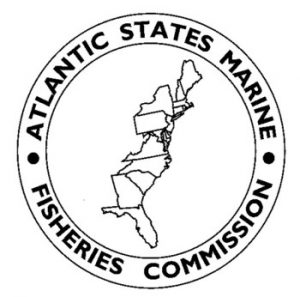
Lobstermen fear offshore tracking data would be used against them
An arm of the Atlantic States Marine Fisheries Commission is considering implementing the tracking requirements on federally-permitted lobster and Jonah crab fishermen in order to collect data on where and how they fish. “As these uses are developing in their discussions about how to divvy up that ocean space, it will be really critical to understand where the important fishing grounds are for the U.S. lobster fishery so those can be maintained,” said Caitlin Starks, a fishery management plan coordinator at the commission. >click to read< 08:22 What bullshit this is.
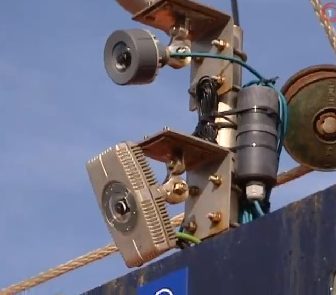
Electronic Monitoring: Hearings set for new electronic lobster boat tracking rules
An arm of the Atlantic States Marine Fisheries Commission is considering implementing the tracking requirements for lobster and Jonah crab boats that have federal permits. A Jan. 19 hearing will be held via webinar and in person at the Urban Forestry Center in Portsmouth, New Hampshire. The other hearings will be held virtually. Others are slated for mid-Atlantic states, Maine and Massachusetts and Rhode Island. >click to read< 16:15
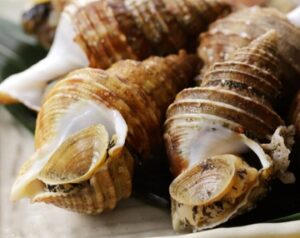
New Regulations for Whelk and Horseshoe Crabs a Challenge for Commercial Fisheries
New state regulations intended to rebuild the whelk and horseshoe crab populations in the Long Island Sound could substantially limit the catches of local fisherman. Davis said that the department had done surveys trawling different areas of the Long Island Sound each year. Asked about the proposed regulations, Bob Guzzo, a commercial fisherman out of Stonington who catches whelk, said he thought the regulations were unnecessary, and that the department shouldn’t be involved in making them. He said that the whelks come and go in cycles. Guzzo said he believed the trawl surveys were inaccurate. >click to read< 14:16
CT DEEP Proposing New Rules For Lobster, Striped Bass, Others – The proposed regulatory changes are intended to address the “depleted state of these ecologically and economically important species in Long Island Sound,” according to DEEP officials. >click to read< 17:02
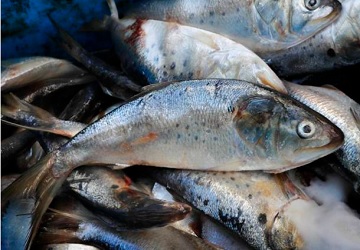
Surge in baitfish catch is a boon to Maine’s lobstermen
Maine’s lobster fishermen typically bait their traps with dead herring, but a scientific assessment in 2020 found that herring are overfished, and quotas for the fish were reduced dramatically. The loss of herring has increased the price of bait and made it harder for many fishermen to trap lobsters. However, losing herring has been offset somewhat by swelling catches of menhaden. Maine’s catch of menhaden, also called pogies or bunker, grew from about 6 million pounds in 2016 to more than 24 million pounds last year. >click to read< 11:28
Electronic Monitoring: Who Gets to Use Our Oceans?
Much of the current effort to create coordinated planning for use of our oceans started in 2010, when President Obama issued an executive order that called for the development of “coastal and marine spatial plans.” The idea is to figure out where to put things like aquaculture and wind farms without harming other things such as fisheries. In early August, the ASMFC announced that it’s considering a plan to require electronic tracking devices on federally permitted vessels that operate in American lobster and Jonah crab fisheries. Most of the lobster fishermen to be impacted are in Maine, and while they’ve expected the tracking plan to go into motion for some time now, Porter says, “there will be some seriously pissed-off lobstermen when this actually hits the ground.” >click to read< 09:21

Electronic Monitoring of the Lobster fishery, Tracking of the Red Shrimp fishery to be imposed
America’s lobster fishing businesses could be subjected to electronic tracking requirements to try to protect vulnerable right whales and get a better idea of the population of the valuable crustaceans. The fishery has collapsed in southern New England, however. Fishermen from New York, Connecticut and Rhode Island were once a significant part of the fishery,,, >click to read<…The American red-spotted shrimp fishery may be subject to electronic tracking requirements to protect vulnerable right whales and better understand precious crustacean populations. However, fishing has collapsed in southern New England. Fishermen in New York, Connecticut, and Rhode Island used to be an important part of the fishing industry, Starks said, but the stock of red-spotted shrimp in southern New England is now depleted. Scientists have linked the collapse of fishing in southern New England to warming seawater. >click to read< 10:50
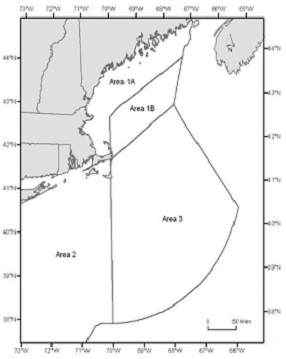
Commercial Atlantic Sea Herring Fishery in Management Area 1A to Close
The Atlantic States Marine Fisheries Commission has projected that the Management Area 1A Atlantic herring fishery will have harvested 92% of its Season I (June 1 – September 30) quota allocation by August 3, 2021. Accordingly, effective at 0001 hours on Tuesday, August 3, 2021, the directed Atlantic sea herring fishery in Management Area 1A will close through September 30, 2021. Unless explicitly authorized, the possession, retention, landing, and sale of Atlantic sea herring taken from Area 1A is prohibited during this closed period. >click to read< 1645
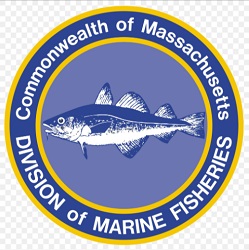
Time to apply for second round of CARES Act relief
The Massachusetts Division of Marine Fisheries mailed applications to seafood processers, wholesalers, commercial fishermen and aquaculture farmers on Tuesday, officially opening the state’s second round of CARES Act relief for fisheries. The funds are intended to mitigate the financial impacts on marine fisheries participants that suffered more than a 35% loss of revenue due to the pandemic. >click to read< 10:11
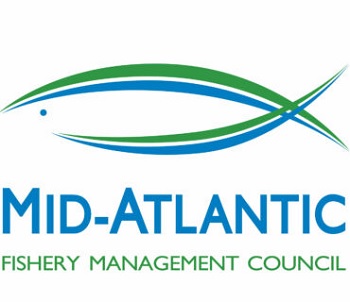
Mass, R.I. Public Hearing: Summer Flounder, Scup, Black Sea Bass Commercial/Recreational Allocation Amendment
Might want to get this out there- it’s going to be important the industry get involved. Tell the Council status quo! Comments may be submitted at any of five virtual public hearings to be held between February 17 and March 2, 2021 or via written comment until March 16, 2021. Wednesday, February 17, 6:00 – 8:00 p.m.: Massachusetts and Rhode Island, Thursday, February 18, New Jersey, Wednesday, February 24, Delaware and Maryland, Monday, March 1, 6:00 – 8:00 p.m.: Virginia and North Carolina, Tuesday, March 2, 6:00 – 8:00 p.m.: Connecticut and New York >click to read< 16:10
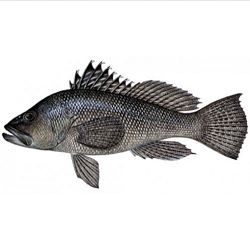
Mid-Atlantic Council Flirts With Overfishing
The relationship between the Mid-Atlantic Fishery Management Council (Council) and overfishing goes back a long way. In 1999, the Council adopted a summer flounder quota that had just an 18 percent probability of preventing overfishing, an action that led to the landmark court decision in Natural Resources Defense Council v. Daley, which established the principal that, to pass legal muster, a fishery management measure must have at least a 50 percent probability of achieving its conservation goals. Immediately after the court handed down that decision, the Council divorced itself from any management measure that might condone overfishing, and spent nearly two decades successfully rebuilding and conserving once-overfished stocks. At one point in the early 2010s, it was the only one of the eight regional fishery management councils that had completely ended overfishing, and didn’t preside over any overfished stocks. >click to read< 14:36

A Final 2020 DMR Update from Commissioner Pat Keliher
As 2020 slowly draws to a close, I’d like to share with you one last monthly update on the work of Maine DMR before we close the books on a year of challenges. Pat. New England Fishery Management Council actions,,, DMR has been auditing the data collected through the CARES Act application process,, Additional coronavirus relief has been approved by Congress however it is much too early,,, much more, >click to read< 12:20

Lobster stock levels remain high in Gulf of Maine, but there is cause for concern
The “now” looks solid for local commercial lobster fishery, based on findings reported in the 2020 Atlantic States Marine Fisheries Commission Lobster Benchmark Stock Assessment, which reported the stock at “record high abundance levels.” The good news continued,, The news for southern New England, including southern Maine, remained poor, with a depleted fishery and no signs of resurgence. The research was conducted by several organizations, including the Department of Marine Resources, Gulf of Maine Research Institute and the University of Maine’s Sea Grant program and Lobster Institute. The assessment, released in October, was based on surveys conducted from 2016 through 2018. However, once the research turns to lobster settlements the future does not look as bright. >click to read< 18:29
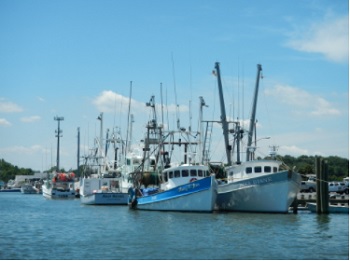
CARES Act Funding Available for Maryland Fishing Industry
The Maryland Department of Natural Resources announces applications will be available Nov. 4 for economic relief funds for the commercial seafood industry through the federal Coronavirus Aid, Relief, and Economic Security Act (CARES), for those who have been affected by the COVID-19 pandemic. The application will be available to eligible members of the seafood industry on the Maryland OneStop website. The deadline to apply is Feb. 28, 2021. >click to read< 16:20
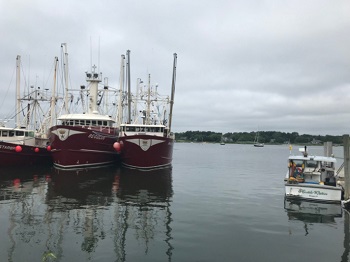
The CARES Act: Lengthy Process, Little to Show for Connecticut Fisheries
Nearly seven months after the Coronavirus Aid, Relief and Economic Security (CARES) Act was signed into law, eligible fisheries and related businesses can apply for $1.8 million in economic aid through the CARES Assistance to Fishery Participants (CAAFP) program. Connecticut is part of the Atlantic States Marine Fisheries Commission (ASMFC), which also includes Maine, New Hampshire, Massachusetts, Rhode Island, New York, New Jersey, Pennsylvania, Delaware, Maryland, Virginia, North Carolina, South Carolina, Georgia, and Florida. From the $300 million, 31 entities received funding. Connecticut’s allocation was $1.8 million, the 9th lowest on the list. Rhode Island received $3.3 million,,, >click to read< 09:58
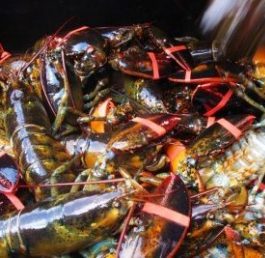
Maine: 1 in 3 Lobstermen got small Paycheck Protection Program loans
About $14.9 million in forgivable Paycheck Protection Program, or PPP, loans of less than $150,000 have been handed out to 1,358 Maine lobstermen, according to an analysis of newly released U.S. Small Business Administration data. That puts lobstermen ahead of full-service restaurants, real estate offices, beauty salons and home builders, which rounded out the top five Maine industries receiving small PPP loans. Maine’s $1.4 billion-a-year lobster industry – including those who buy, sell and process lobster as well as catch it – have received 1,495 forgivable PPP loans worth at least $24.2 million, so far. Fishermen got the lion’s share of the industry’s total PPP money, but only because they outnumber dealers, retailers and processors. Some dealers got loans of up to $1 million. >click to read< 07:15
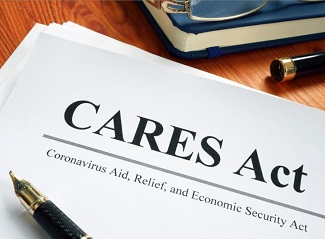
Commercial Fisheries and Fishermen Can Apply for CARES Relief But Not Yet
On May 7, the Secretary of Commerce announced the allocation of $300 million in fisheries assistance funding provided to states, tribes, and territories with coastal and marine fishery participants who have been negatively affected by COVID-19. As a next step, the National Oceanographic and Atmospheric Administration will use these allocations to make awards to its partners – the interstate marine fisheries commissions, Puerto Rico, and the U.S. Virgin Islands – to disburse funds to address direct or indirect fishery-related losses as well as subsistence, cultural or ceremonial impacts related to COVID-19. But relief may take some time. No funds have yet been made available to the Atlantic States Marine Fisheries Commission or states. The N.J. Department of Environmental Protection staff is working diligently to develop a spending plan and application process that must be approved by NOAA. >click to read< 11:07
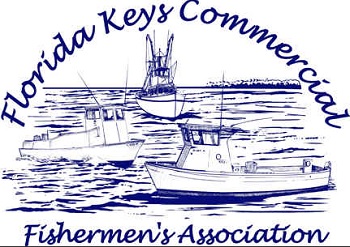
CARES Act Stimulus: Funding process for Florida Keys fishermen slowly unfolds
Both commercial and for-hire fishermen in the Florida Keys hit hard by the economic shutdown spurred by the novel coronavirus may apply to receive a portion of $23.6 million allocated to the state through the CARES Act Stimulus. Of the $300 million slugged for federal fisheries’ assistance, Florida is to receive about 12.7%, or the fourth largest share behind Alaska, Washington and Massachusetts. While Capt. Bill Kelly, executive director of the Florida Keys Commercial Fishermen’s Association, says the Keys fisheries have been slighted, he remains optimistic about the upcoming lobster season. NOAA will administer the funds through the interstate marine fisheries arms. For here, that’s the Atlantic States Marine Fisheries Commission, which will, in turn, contact the Florida Fish and Wildlife Conservation Commission to identify and establish a plan for fishermen to apply for funds. >click to read< 11:44
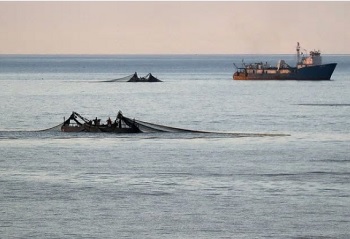
Chesapeake Bay’s menhaden catch cut drastically, along with Omega Protein quota
Virginia is cutting this year’s Chesapeake Bay menhaden catch by more than 80% from last year’s landings in order to end a federal moratorium.
Federal fisheries officials said they’d bar fishing for menhaden in the Bay this year — as long as the fish were headed for Omega Protein’s fish oil and fishmeal plant in Reedville — because the state had not enacted a 41.5% cut to 51,000 tons in Omega’s quota, which had been imposed by the Atlantic States Marine Fisheries Commission in 2017. But the Atlantic States commission has not found that menhaden were overfished. “To be perfectly clear, there is no conservation basis for the Chesapeake Bay cap. No scientific methodology was used in setting the Chesapeake Bay cap by the ASMFC, ,,, >click to read< 15:35

Court Finds American Lobster Fishery Requires Incidental Take Statement for Impacts on North Atlantic Right Whale
As commercial fisheries across the United States continue to adjust operations in the face of new legal requirements, such as the shift from single-species to ecosystem-based management, one challenge in particular has dominated the courts: the Endangered Species Act (ESA). Recent court decisions have vacated commercial longline fishing permits in federal waters off the coast of California that could endanger the Pacific leatherback sea turtle and restored prohibitions on gillnet fishing gear in a known New England feeding ground for the endangered North Atlantic right whale. This trend continued on April 9, when a federal district court judge in Center for Biological Diversity,,,The American lobster fishery is managed cooperatively by the Atlantic States Marine Fisheries Commission and NMFS, >click to read< 14:45
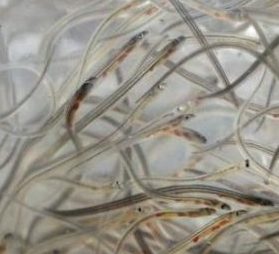
Coronavirus affecting Maine fisheries
As of early Wednesday morning, the Maine Center for Disease Control and Prevention had yet to report a single confirmed or presumed case of COVID-19, the respiratory infection caused by the coronavirus, in eastern Maine, but the lobster industry is already feeling the impacts of the global pandemic. “The market is really poor,” Stonington lobsterman Hilton Turner said Tuesday afternoon.,, The uncertainties arising from the coronavirus will likely affect other fisheries. The state’s elver fishing season opens on Sunday, and virtually the entire harvest is shipped to buyers in China. >click to read< 10:19
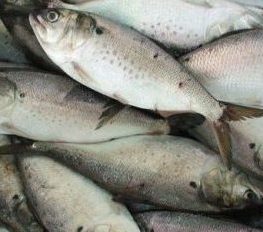
Science Center for Marine Fisheries Releases Evaluation and Summary of Latest Atlantic Menhaden Assessments
Dr. Steve Cadrin, Professor at the School for Marine Science and Technology at the University of Massachusetts Dartmouth and past President of the American Institute of Fishery Research Biologists, has completed an evaluation and summary of the latest Southeast Data, Assessment, and Review (SEDAR) Atlantic menhaden stock assessments. >click to read< 15:58
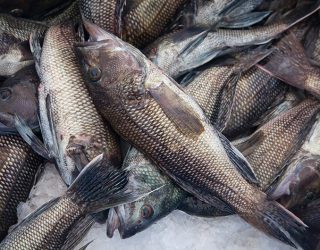
Summer founder, sea bass and scup are on the docket for upcoming public hearings focused on allocation percentages
The Mid-Atlantic Fishery Management Council (Council) and the Atlantic States Marine Fisheries Commission (Commission) have scheduled a series of scoping hearings to gather public input on the range of issues and information to be considered in the Summer Flounder, Scup, and Black Sea Bass Commercial/Recreational Allocation Amendment. Hearings will be held February 13 – March 3. Written comments will be accepted through March 17, 2020. All comments provided at public hearings or in writing will be presented to the Council and Commission. Lots of info, >click to read< 14:03

NOAA Announces 2020 At-Sea Monitoring Coverage Levels for Groundfish Sector Fishery
NOAA announces that for fishing year 2020, the total target at-sea monitoring coverage level is 40 percent of all groundfish sector trips subject to the at-sea monitoring program. For more information, please read our letter to the New England Fishery Management Council and the Summary of Analysis Conducted to Determine At-Sea Monitoring Requirements for Multispecies Sectors FY 2020. >click to read< 15:27

Maine DMR wants to close the pogy fishery to newcomers for 2 years while it crafts a new FMP/Enforcement plan.
“Closing fisheries is kind of a radical step and a dangerous step because it eliminates diversity,” said Commissioner Pat Keliher. “We’re not saying close it in perpetuity. Close it to see if there is a different approach here that would allow us to get both enforcement and reporting back under control.” Keliher said the 2019 menhaden season was challenging because of “a perfect storm of circumstances.” A sharp reduction in the herring quota spurred huge growth in the menhaden fleet, with 50 new boats rushing to satisfy the $485 million lobster industry’s need for substitute bait. >click to read< 07:23
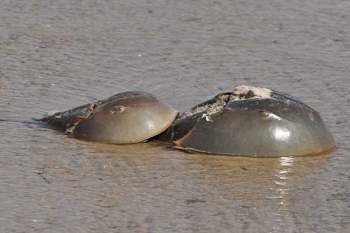
Concerns over horseshoe crabs spur discussion about limiting harvest
When Long Island beaches come alive at high tide with hundreds of thousands of horseshoe crabs, looking to spawn under the spring and summer moons, it’s also time for many fishermen who track those cycles to harvest the arthropods at their most plentiful. Most use their catch for bait, but some sell them to markets, where they are shipped either for other fishermen’s purposes or medical uses.,, Jamie Hummel, who fishes from Hampton Bays, said baymen like him take only their limit, and need only enough to keep their conch pots baited through the year. He said if anything regulators should look to limit or end the market for selling horseshoe crabs. >click to read< 14:25

Omega Protein Statement on Menhaden Fishery Moratorium
Omega Protein is disappointed in today’s decision by the Secretary of Commerce to impose a moratorium on Virginia’s menhaden fishery. This is the first time that a moratorium has been placed on a fishery that is not overfished and is healthy by every measure. The ruling is the result of a requested federal non-compliance review from the Atlantic States Marine Fisheries Commission (ASMFC),,, >click to read< 15:52

Northern Shrimp: Future not promising for shrimp fishery
The fate of the shrimp fishery for the coming year, if any, will likely be determined Friday afternoon when the Northern Shrimp Section of the Atlantic States Marine Fisheries Commission meets to review the 2019 Stock Assessment Update Report and updates from the section’s Summer Survey Work Group and the Northern Shrimp 2019 Summer Survey Results. The meeting will be held by telephone and interested parties may listen to the proceedings by joining in the conference call or by signing in to a “webinar” on the internet. >click to read< 09:29

EDITORIAL: Menhaden harvest limit actually means something
Last week, the Atlantic States Marine Fisheries Commission, the partnership, or “interstate compact,” that sets harvest limits for 27 fisheries up and down the Atlantic Coast, officially accused Virginia of allowing Omega Protein to overfish,,, In a December 2017 press release on the deal, Cooke hinted at a new use: “The animal feed ingredients produced by Omega Protein are an important component in Cooke Aquaculture’s production of healthy Atlantic salmon, making this acquisition a strategic move that greatly enhances Cooke’s vertical integration.” So instead of rockfish, maybe the Bay’s menhaden will be feeding farm-raised salmon in Canada. >click to read< 09:15


































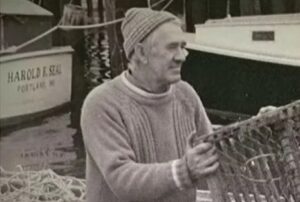
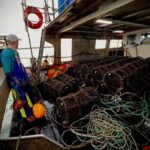

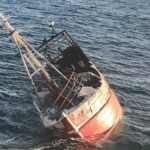

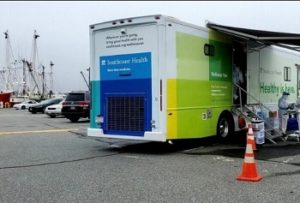
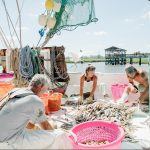
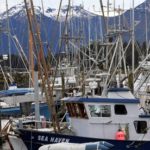
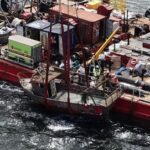



Public Hearings for Summer Flounder, Scup, and Black Sea Bass Commercial/Recreational Allocation Amendment
The Mid-Atlantic Fishery Management Council (Council) and the Atlantic States Marine Fisheries Commission (Commission) are seeking public comment on the Summer Flounder, Scup, and Black Sea Bass Commercial/Recreational Allocation Amendment. Comments may be submitted at any of five virtual public hearings to be held between February 17 and March 2, 2021 or via written comment until March 16, 2021. >click to read, click for links< 12:41
Share this post